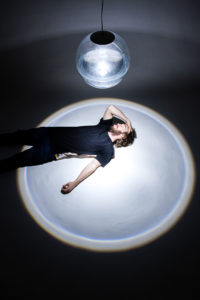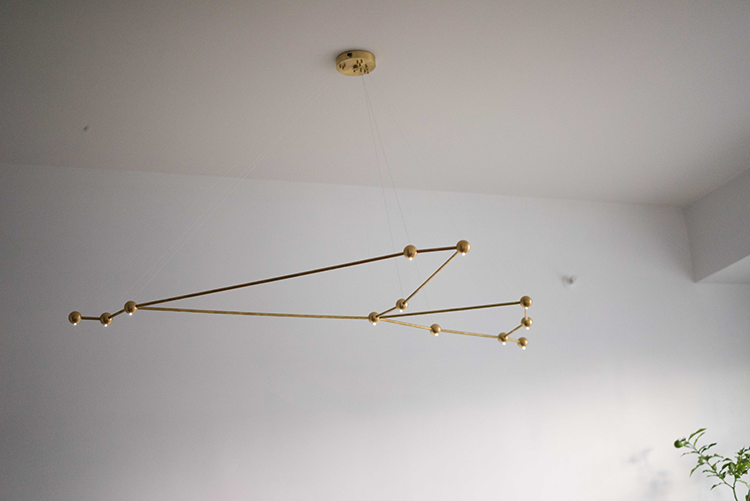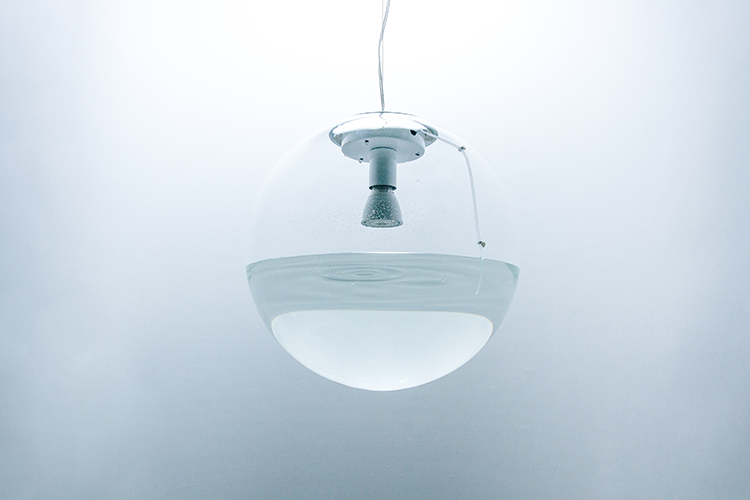 Richard Clarkson’s Cloud, 2014, comes in different sizes, mimicking the variety of cumuliforms to be found in a stormy sky. All photographs courtesy of Richard Clarkson Studio.
Richard Clarkson’s Cloud, 2014, comes in different sizes, mimicking the variety of cumuliforms to be found in a stormy sky. All photographs courtesy of Richard Clarkson Studio.
Feature
Lords of Design: Richard Clarkson
This story was part of a larger print feature in the Winter 2019 issue on New Zealand designers.
 IN 2012 RICHARD CLARKSON, WHO GREW up on a farm in Hawke’s Bay, was in New York, enrolled in the School of Visual Arts’ Making Studio, one of the courses in the school’s Products of Design MFA program. They were studying something called Arduino, a platform for “physical computing,” or using sensors and software to create devices that can interact with the physical world. Clarkson was intrigued— his work had long been marked by an interest in the confluence of tech and design, going back to his undergraduate days at Victoria University of Wellington, where he’d developed an armchair using generative 3-D modeling, the f(x) chair. Arduino represented a step up from the latching relays and complex switches he’d been struggling with in other work, and using the new platform he soon created a prototype for a smart lighting and sound system called the Cloud. Shaped (no surprise) like a small cloud, it was made from felted polyester fiberfill that encased electronic guts—speakers, microprocessor, lights—and was programmed to sense motion and music’s beats, and to flash like a thunderhead alive with electrical energy. The Cloud got enough buzz to draw the attention of publications Core77 and Colossal, and Clarkson’s professional design practice soon took off.
IN 2012 RICHARD CLARKSON, WHO GREW up on a farm in Hawke’s Bay, was in New York, enrolled in the School of Visual Arts’ Making Studio, one of the courses in the school’s Products of Design MFA program. They were studying something called Arduino, a platform for “physical computing,” or using sensors and software to create devices that can interact with the physical world. Clarkson was intrigued— his work had long been marked by an interest in the confluence of tech and design, going back to his undergraduate days at Victoria University of Wellington, where he’d developed an armchair using generative 3-D modeling, the f(x) chair. Arduino represented a step up from the latching relays and complex switches he’d been struggling with in other work, and using the new platform he soon created a prototype for a smart lighting and sound system called the Cloud. Shaped (no surprise) like a small cloud, it was made from felted polyester fiberfill that encased electronic guts—speakers, microprocessor, lights—and was programmed to sense motion and music’s beats, and to flash like a thunderhead alive with electrical energy. The Cloud got enough buzz to draw the attention of publications Core77 and Colossal, and Clarkson’s professional design practice soon took off.

A Capricorn Constellation chandelier, 2017, in which each LED “star” is held in place by a brass armature.
Fast-forward six years, and the sublime graduate school project that jump-started his career is the flagship product of Clarkson’s eponymous Brooklyn-based studio, which he founded soon after receiving his master’s. It’s also emblematic of the rest of the company’s eclectic range of products, which now includes such sublimities as Rain, a lamp full of water that casts the shadows of propagating waves on the floor below; Blossom, a flower-shaped kinetic sculpture billed as the world’s first inflatable 3-D print; and Constellation, a family of chandeliers, each of which takes the form of one of the signs of the zodiac. “We’re looking to re-create those moments in which you’re sort of lying in the grass, looking at the stars at night, or looking at a thunderstorm in the distance, or even just a shooting star, all these moments where you have intense, sort intimate relationships with nature,” Clarkson says.

The circular glass of the water-filled Rain lamp, 2016, magnifies each drop as it falls. The water circulation is powered by a hidden pump.










